
Dogs need physical exercise—and as their owner, those daily steps add up for you, too. A 2017 study published in BMC Public Health found that dog owners walk an average of 22 extra minutes per day. That’s exercise that counts toward the American Heart Association’s recommended 150 minutes a week of moderate-intensity exercise.
Walking outside has some major health perks for you…and, says veterinarian Megan Conrad, DVM, of the veterinary telemedicine service Hello Ralphie, regular walks provide excellent mental stimulation for your pooch.
However, Dr. Conrad and some fellow veterinarians told us there are some definite do’s and don’ts of dog walking that’ll help keep you and your pup safe and strolling happily for ages to come.
Research Shows Owning This Type of Pet Could Help You Live Longer
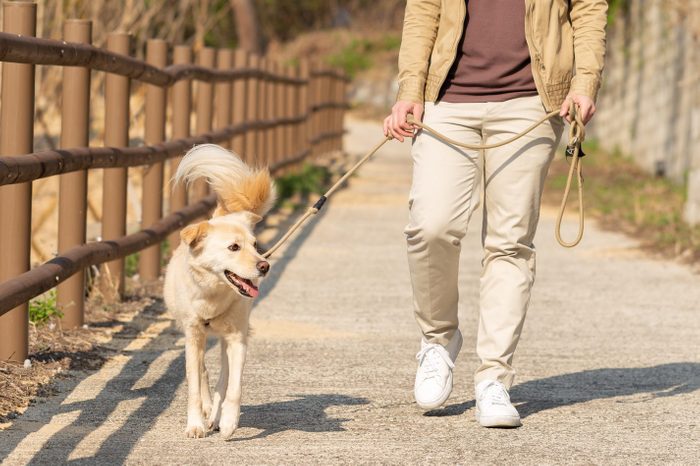
Do: Know your dog’s walking needs
In general, daily walks are recommended for most dogs, Dr. Conrad says. Still, “the length of your walk very much depends on breed, age, and overall physical health.” A young border collie can go for several miles, while an older mini poodle is likely to need a shorter walk.
The average adult dog needs about 20 to 45 minutes of moderate exercise twice a day, which can include a brisk walk, says Whitney Miller, DVM, MBA, DACVPM, Chief Veterinarian at Petco. But, Dr. Miller says, it’s a good idea to check with your pet’s veterinarian to determine his or her individual exercise needs.
The Top 8 Walking Mistakes Orthopedic Doctors Say People Make
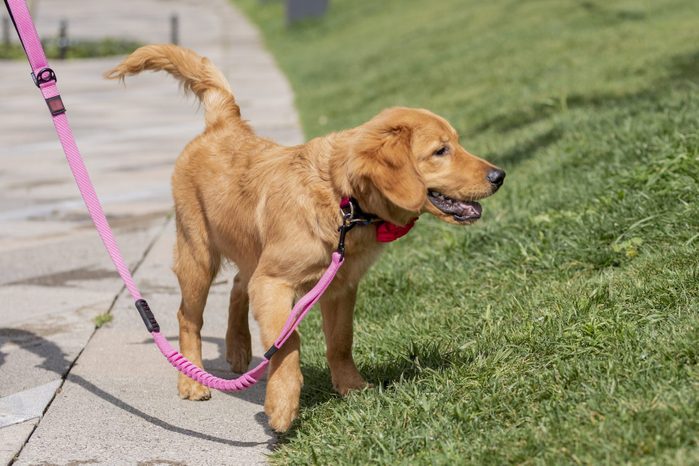
Don’t: Walk too much too soon
“Just like we would not go out and run a marathon without training first, you cannot expect your dog to go long distances right away,” Dr. Karwacki says. When you’re establishing a walking routine, go short distances first and see how your dog is doing before you tack on more milage.
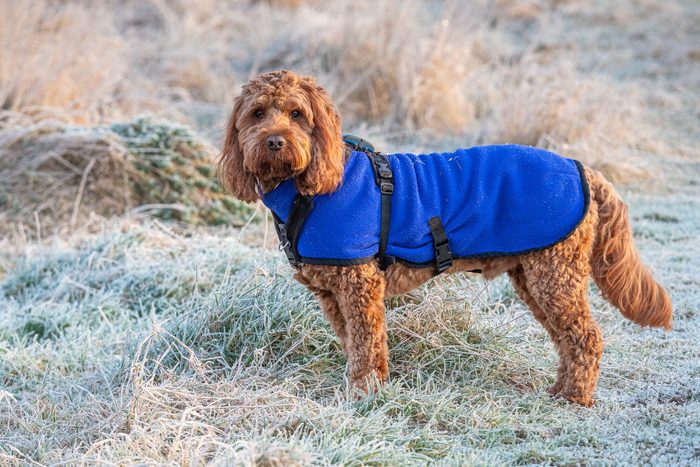
Do: Make adjustments for the weather
“The general rule is if it’s too hot or too cold for you to be outside, it’s too much for your dog as well,” says veterinarian Amber Karwacki, DVM, Partner Doctor at Heart + Paw.
This is especially true for breeds like French bulldogs, pugs, or Boston terriers that don’t handle high temperatures well. One way around the heat is to aim for early morning or nighttime walks—just make sure to equip yourself and your dog with high-visibility gear like reflective clothing and lights (and carry a flashlight!). Regardless of the time of year, don’t forget to wear sunscreen.
If possible, choose an area or route that allows your dog to walk on soft grass or dirt, as this helps prevent damage to their paw pads, Dr. Miller says. “If you are walking through the snow or on cold ground, booties (like these!) can help prevent your pet’s paws from injury, keep snow and ice from getting stuck between the pads, and provide a barrier against ice melt,” she adds.
If you’re walking on pavement during the summer, using paw protection (and bringing plenty of water!) is a good idea, too.
I Walked Everywhere I Needed to Go for a Week—Here’s What Happened
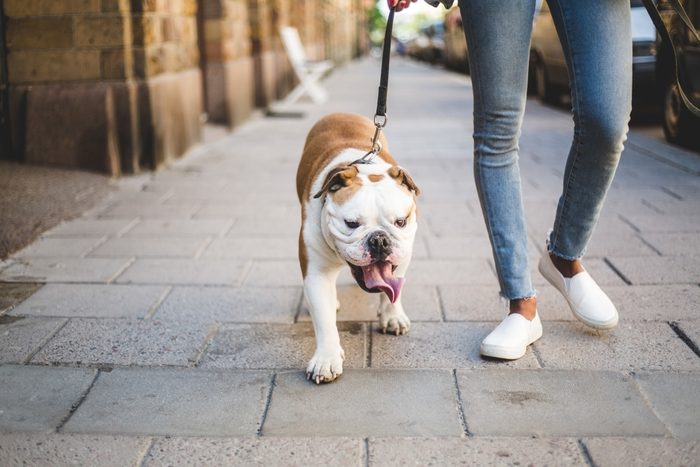
Do: Watch your dog’s behavior
“Dogs may slow down, look in your direction, or outright refuse to move if they are feeling tired or don’t want to walk,” Dr. Conrad says—and it’s important to respect this cue. Take notice of any excessive panting or unusual fatigue as well, Dr. Miller adds, as these are clear signs to end the walk.
If you sense that your dog is peeing more than usual, you should contact your vet—this could be a sign of illness.
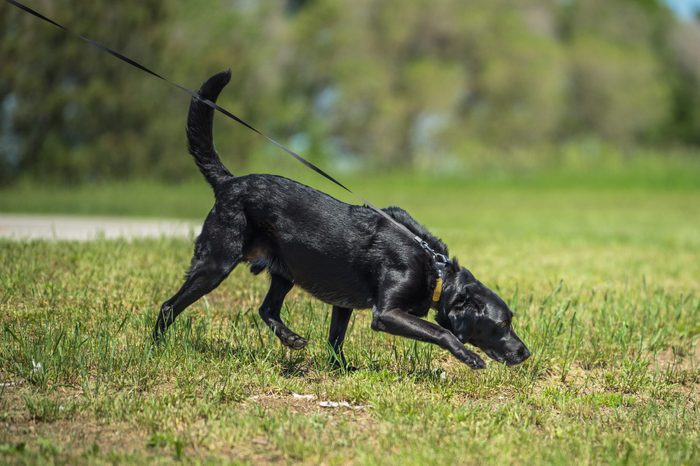
Do: Let your dog sniff around
“Behaviorally, there’s nothing wrong with your dog frequently stopping to sniff their environment, and it can be good enrichment for them,” Dr. Miller explains. “Sniffing is one of the main ways your dog experiences their environment, and there can be lots to take in on a walk, even in a familiar area.”
Experts Say Most People Who Live to 100 Years Old Share This One Thing in Common

Do: Use positive reinforcement
Avoid reprimanding your dog or using other forms of punishment, even if it seems mild, like pulling on their collar, Dr. Miller says. Research, such as one 2020 study, has shown that aversive-based training can cause stress and confusion in dogs, and this can lead to poor behavior—possibly only because they don’t understand.
“Positive reinforcement is proven to be effective,” Dr. Miller says. “It promotes a focus on teaching dogs what we want them to do, such as having good manners, rather than focusing on behaviors we deem undesired.”
You can use treats to reward your dog when they stay politely at your side, when they observe other dogs calmly instead of charging after them, and when they return their attention to you after something distracts them.
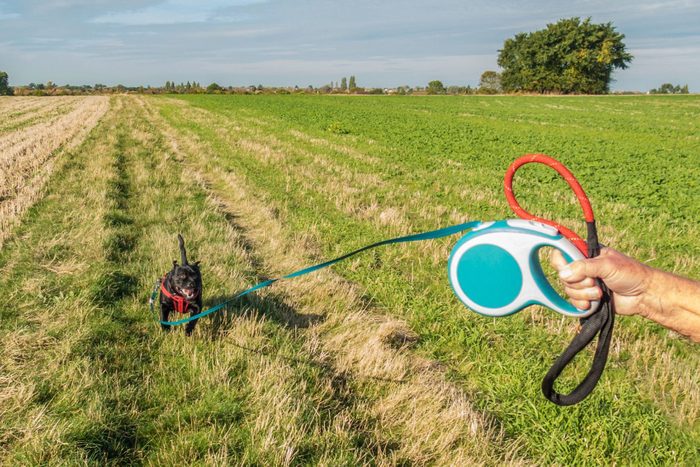
Don’t: Use retractable leashes
Retractable leashes allow too much freedom to explore in places that may be dangerous, Dr. Conrad says—and they can make it difficult to keep control of your dog. Some larger breeds of dogs may even be able to break them, and they’re known for causing skin burns, Dr. Karwacki adds.
Here, it’s also important to note the findings of an April 2023 sports medicine study at Johns Hopkins University. A team of doctors analyzed 20 years’ worth of national data and reported that on average, around 21,000 people per year seek treatment for injuries related to walking their pups on leashes. The data suggest that the majority of these injuries occur in individuals between age 40 and 64, and the most common reported injuries are finger fractures, traumatic brain injury, and shoulder sprains and strain.
That’s one more reason to choose a stable leash (not a retractable one), pay attention to your walk (don’t lose your focus by looking at your phone or getting otherwise distracted), and be mindful of the size of dog you’ll be able to manage for the coming years when you’re looking to bring a new canine companion into your life.
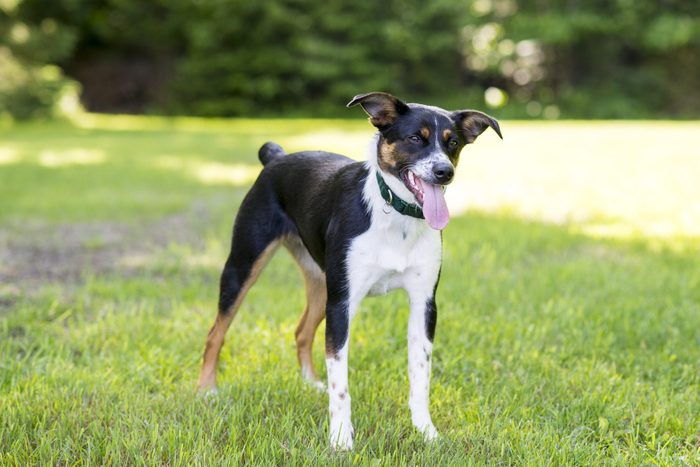
Don’t: Let them off the leash
Unless you’re in a dog park, “it is essential to always keep your dog on a leash when out on a walk,” even if they’re well-behaved and trained, Dr. Miller says. “You may encounter local wildlife and other people or dogs that could react negatively toward an off-leash dog or could distract your dog.”
Dr. Miller recommends using a no-pull harness that’s well-fitted (meaning it doesn’t restrict your dog’s range of motion) to encourage good behavior and limit accidental negative reinforcement, like pulling on their collar. “If your dog gets excited and pulls during the walk, simply stop walking and reward them when they are exhibiting the desired behavior of a loose leash,” she explains. “Continue to reward while walking when your dog is at your side and not pulling. Patience and consistency are important for reinforcing good manners.”
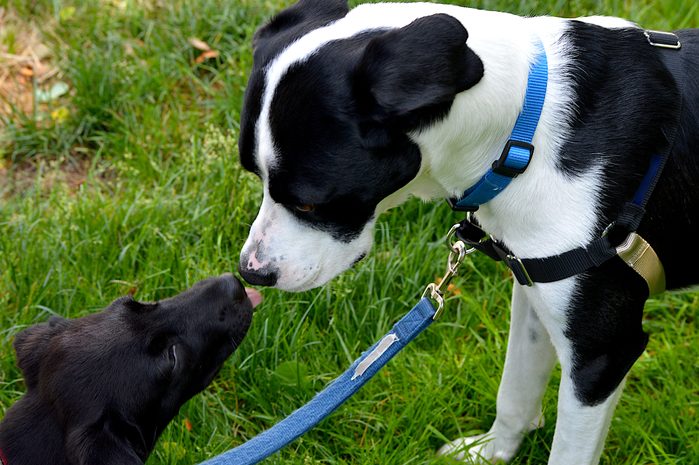
Don’t: Approach other dogs without permission
“Some dogs are reactive or nervous around other dogs, and having a strange dog come up to them can be intimidating and scary,” Dr. Conrad says.
Plus, not every person will be comfortable with you interacting with their pet, so be sure to over-communicate and seek permission, adds Dr. Miller. (Also, stay fully focused—on-leash greetings can cause leashes to tangle up, presenting safety risks for both the dogs and the walkers.)

Don’t: Walk right after they eat
Avoid going on a long walk with your dog if it’s within an hour of them eating a large meal, Dr. Miller says. This reduces the risk of stomach bloat, which can be harmful to your dog. (Besides, is there any feeling more satisfying than putting their breakfast bowl in front of them right after your morning walk? We think not.)
Get The Healthy @Reader’s Digest newsletter and follow The Healthy on Facebook, Instagram, and Twitter. Keep reading:
